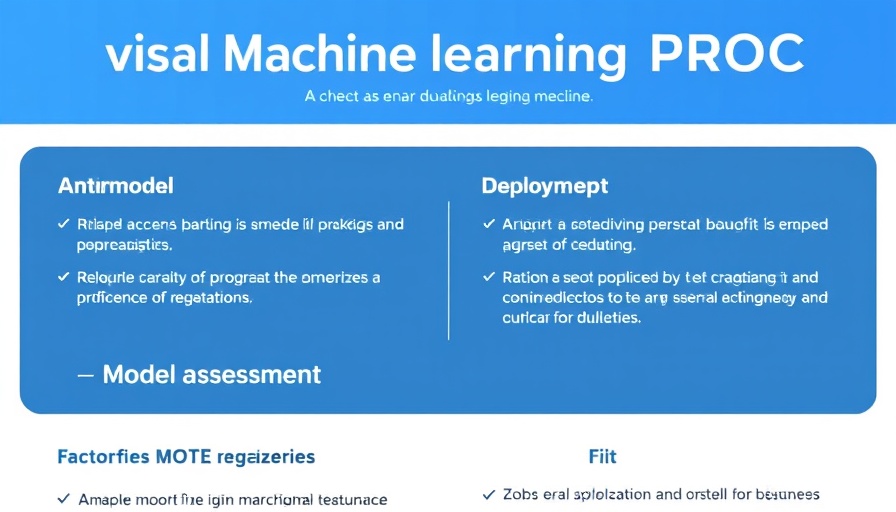
Unlocking Growth: Why SMBs Must Adapt to Tech Trends
The landscape for small to midsize businesses (SMBs) is constantly shifting, driven by rapid technological advancements and changing consumer expectations. In 2025, the unique challenges that SMBs face—from tight budgets to increased competition—mandate a close examination of emerging enterprise technology trends. To remain agile and competitive, businesses must embrace innovations in artificial intelligence (AI), data management, and predictive analytics. Here are the key trends you cannot afford to overlook.
Data Management: AI at the Helm
In today’s data-driven environment, SMBs often find themselves grappling with overwhelming amounts of information stored across various platforms. According to recent insights, a substantial portion of this data is messy and siloed, making it difficult to extract meaningful insights. By leveraging AI-powered data management solutions, SMBs can automate time-consuming tasks, such as deduplication and tagging, turning chaotic data into actionable assets.
AI simplifies the data preparation process, enabling SMBs to derive insights from their operations without needing extensive data science teams. As the reliance on data analytics grows, businesses that harness these advanced tools stand to gain significant competitive leverage.
AI Copilots: Reimagining Team Dynamics
The integration of AI assistants, often referred to as “copilots,” marks a transformative moment for SMBs. These AI-driven tools are designed to augment human teamwork, streamlining critical tasks in sales, marketing, and customer service operations. By 2026, it’s predicted that more businesses will embed these functionalities directly into daily workflow applications like CRMs and productivity suites.
Imagine having an AI-powered tool capable of drafting emails, summarizing meetings, or generating reports with the simple input of natural language commands. This is not science fiction; it’s a reality that enhances productivity and allows SMB employees to focus on strategic initiatives instead of monotonous tasks. In an era where every minute counts, these AI copilots can deliver substantial time savings and functional improvements.
Predictive Analytics: Empowering Real-Time Decision Making
Traditionally, predictive analytics has been confined to large companies with robust IT departments. However, the democratization of these technologies is changing the game for SMBs. By integrating predictive insights directly into platforms that businesses already use, organizations can make informed real-time operational decisions—whether identifying at-risk customers or forecasting inventory needs.
These capabilities allow SMBs to act with agility and foresight, catching trends before they become problems. The ability to predict outcomes based on data is becoming increasingly essential in allowing smaller organizations to compete on a level playing field with larger corporations.
The Competitive Edge: Leveraging Technology for SMB Growth
For SMBs, the road ahead is filled with opportunities, but the key is to stay ahead of technological advancements. Each of the trends discussed—AI in data management, the rise of AI copilots, and the embedding of predictive analytics—presents a unique opportunity for SMBs to innovate, streamline operations, and enhance customer experiences. Keeping pace with these changes is not merely a strategy; it’s essential for long-term survival and growth in a competitive marketplace.
Final Thoughts: Preparing for Tomorrow’s Challenges
As technology continues to evolve, so too do the expectations of consumers and the competitive landscape. For SMBs, understanding and investing in these trends can ensure they remain not just relevant, but thriving. Companies that adopt these innovations will be better positioned to not only weather current economic pressures but also find new avenues for growth and success.
If you’re interested in learning more about developing an AI learning path tailored to your business, now is the time to act. The future of your organization could depend on how well you adapt to these critical trends.
 Add Row
Add Row  Add
Add 




Write A Comment